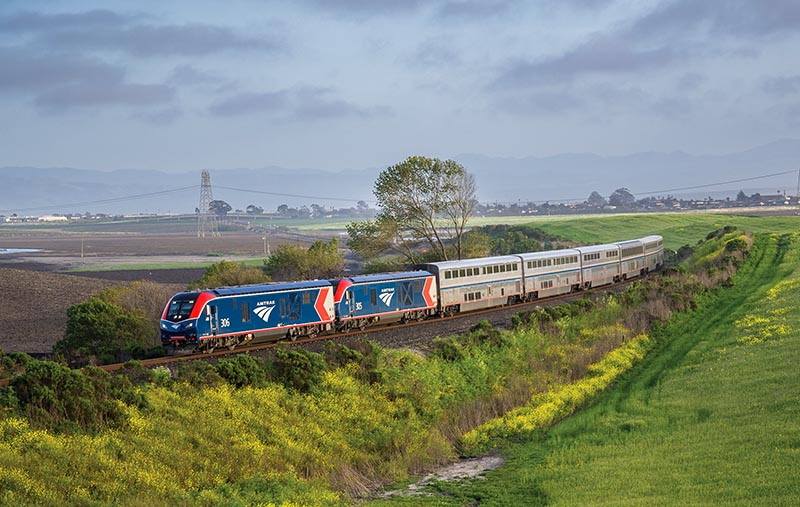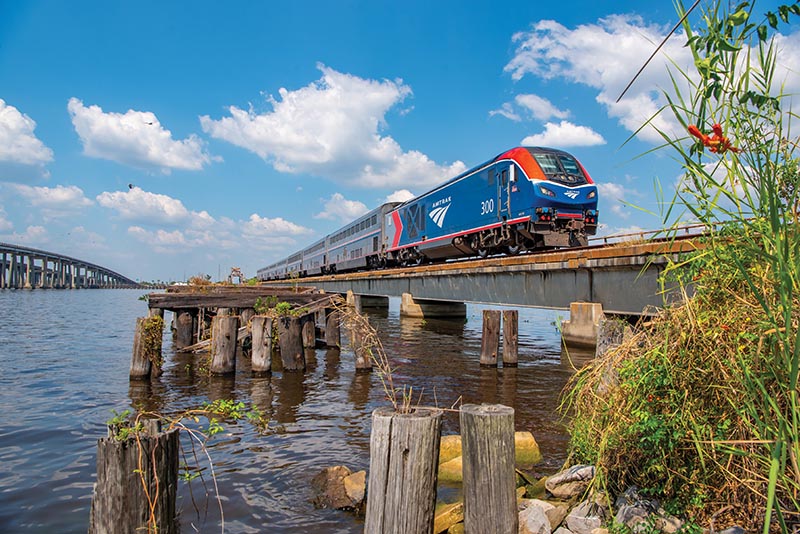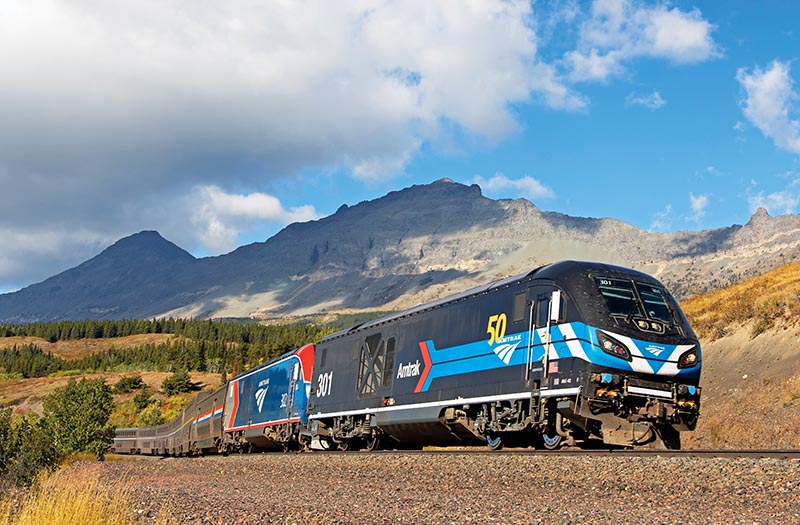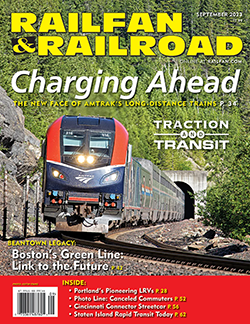From the outside looking in, the debut of Amtrak’s new long-distance locomotives in early 2022 didn’t appear to go as planned. On February 8, officials with Amtrak and Siemens Mobility gathered at Chicago Union Station to celebrate the inaugural run of the ALC-42 locomotive in revenue service and to announce the purchase of 50 more units for a total of 125 long-distance Chargers. But by the time the Empire Builder departed on that blustery day, the flashy new locomotives were stuck behind a 25-year-old General Electric P42 — the same type of locomotive the new ones are supposed to replace. Issues stemming from the new locomotive’s Positive Train Control system had caused the last-minute addition of the GE.
Over the next few weeks and months, the Empire Builder was beset with delays, most of them stemming from the new locomotives and their inabilities to operate in the frigid cold of the Great Plains and Northern Rockies in winter. Some might have questioned the decision to put a brand-new, mostly untested class of locomotive on the point of a train in winter. But Devon Parsons, Amtrak’s director of equipment engineering for locomotives and power systems, said it was an intentional decision.

ABOVE: On April 25, 2023, locomotive 306 leads the northbound Coast Starlight at Moss Landing, Calif. The Coast Starlight was the third train to get the new locomotives as regular assignments following the Empire Builder and City of New Orleans. —Elrond Lawrence photo
“We put the locomotives into the toughest environment we have to work the bugs out,” Parsons said. “There is no testing chamber that can replicate what the Empire Builder goes through in winter.”
A year-and-a-half since the ALC-42s’ in-service debut, Amtrak officials said they have learned a lot about the locomotive and many of the bugs that plagued those early runs. And while a few vocal critics (mostly online) have written off the locomotives as a failure, Amtrak said they are anything but and that they will be around for decades to come.
“These locomotives are going to be the new face of Amtrak for the next 30 or 40 years,” said spokesperson Marc Magliari.
Siemens Charges Ahead
Until 2010, the German-based Siemens’ only foray into the North American market had been in transit, where it was building one out of every three light rail vehicles in the U.S. Its first move into the heavy rail market came when the company announced a $466 million deal to build 70 ACS-64 electric locomotives for the Northeast Corridor. The ACS-64s were a heavily modified version of Siemens’ EuroSprinter model. In 2014, Siemens then inked a deal with a coalition of states to produce nearly 70 SC-44 “Charger” locomotives for state-supported services across the country. While the Charger has influences from the ACS-64 and Siemens’ European products, its design was also heavily impacted by the work of the Next Generation Corridor Equipment Pool Committee, a group created in 2010 after Amtrak was directed by Congress to bring stakeholders together to design the “next generation” of passenger rail equipment.

ABOVE: Train 59, the southbound City of New Orleans, is on time at Akers, La., sailing over Bayou Manchac with class unit 300 in the lead on September 22, 2022. —David Perkins photo
The standard SC-44 locomotives have a 4,400 hp-rated Cummins QSK95 diesel engine and can reach speeds up to 125 mph. The locomotive also meets Tier 4 standards set by the U.S. Environmental Protection Agency. The locomotives are 71 feet, 5 inches long; 12 feet, 6 inches tall; and weigh 264,556 pounds. This makes them only about 2,000 pounds heavier than an F40PH, but 15 feet longer and thus better able to distribute their tonnage. By the late 2010s, the SC-44s began to appear on Amtrak’s Midwest services out of Chicago, its Pacific Surfliner services in California and the Cascades in Washington and Oregon. Brightline, MARC, Coaster, and Altamont Corridor Express also acquired Chargers.
In December 2018, Siemens scored its biggest deal yet with Amtrak when the passenger railroad announced that it was purchasing 75 Charger locomotives for long-distance services. While based on the SC-44, there are some significant differences between the ones purchased for state-supported services and the ones for long-distance. The new ALC-42 locomotives have larger fuel tanks and produce 4,200 hp instead of 4,400 hp. The lower horsepower rating is more appropriate for long-distance running and extends the time between servicing…




